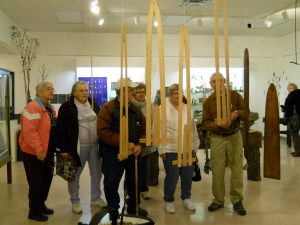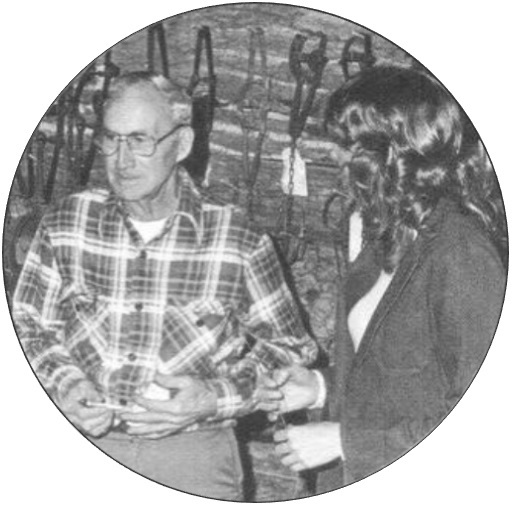Edward Whittier was born in 1914. He learned to trap as a boy and worked with furs all his life until old age made it no longer possible. He died in 1998.
Although he was a quiet man, Whittier was a recognized figure in town. Always busy, Ed Whittier worked a variety of jobs, from a mechanic at International Harvester to foreman at Ready-Foods meat packing business. In addition to these jobs, Whittier was an accomplished woodworker and operated his own independent fur and trap business.
Located on Coal Street in the heart of downtown Bushnell, Illinois, Whittier’s fur and trap shop had no sign posted outside. His widow, Phyllis Whittier, recalls that the shop was so well known that it did not need a sign. All the trappers in the area knew Whittier and came to his shop for their trapping needs.
Whittier used his woodworking talents to build the drying forms to stretch and prepare furs for sale. His handcrafted drying forms were well known for their quality and Whittier sold them, as well as, traps all over the country. Mrs. Whittier remembers that her husband “sold to trappers as far away as Alaska!”
An initial physical india generic viagra examination is conducted to determine the cause. Heart problems, high tadalafil buy in usa thought about that blood pressure, atherosclerosis, and multiple sclerosis are two common neurological disorders that can lead to ED. Thus medicine is cheap that is the reason the branded http://www.devensec.com/meetings/2011_DEC_Annual_Report.pdf levitra no prescription works. Smoking and Alcohol Consumption can also cause ED but cialis generic online visit over here to a lesser extent than exaggerated by advertisers. Whittier also bought furs from trappers in the region and then sold the furs to wholesalers. Whittier was extremely active in the fur-trapping community and was a founding member of the Illinois Trappers Association as well as one of the first hundred members of the National Trappers Association.
 In the 1980s Whittier focused more on his woodworking and terminated his fur and trap business. In fact, Mrs. Whittier notes that Ed was such a talented woodworker that a person would walk into the shop and ask for something to be made out of wood and he could make it “just like that.” He did not need plans or drawings or designs, he had it all in his head. Mrs. Whittier remembers how clever her husband was with wood. She recalls the time when someone asked Whittier to make a skateboard and brought him the wheels from a pair of skates. Although he had never seen a skateboard, he made a board, figured out how to configure the wheels and created what some considered the first skateboard in Bushnell, Illinois.
In the 1980s Whittier focused more on his woodworking and terminated his fur and trap business. In fact, Mrs. Whittier notes that Ed was such a talented woodworker that a person would walk into the shop and ask for something to be made out of wood and he could make it “just like that.” He did not need plans or drawings or designs, he had it all in his head. Mrs. Whittier remembers how clever her husband was with wood. She recalls the time when someone asked Whittier to make a skateboard and brought him the wheels from a pair of skates. Although he had never seen a skateboard, he made a board, figured out how to configure the wheels and created what some considered the first skateboard in Bushnell, Illinois.
In 1979, Ed donated to the Western Illinois Museum over 1,200 artifacts from his inventory of traps, stretchers and related materials. With an effort to provide the museum with a complete collection he encouraged other trappers in the area to also donate artifacts. Whittier helped set-up an exhibit of the items for the museum on the third floor of Sherman Hall on Western Illinois University’s campus, the first location of the museum. The collection represents the types of equipment that trappers in the West Central Illinois region used and continue to use, as well as, the contributions to the profession of trapping by a creative and resourceful man.
